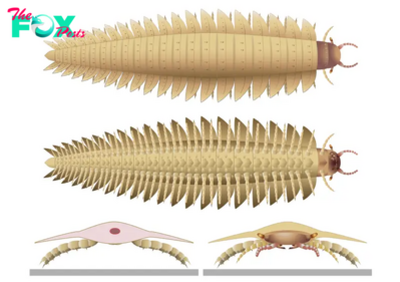Animals
1st tardigrade fossils ever discovered hint at how they survived Earth's biggest mass extinction
Tardigrades are well-known for being nearly indestructible. Now, scientists have reanalyzed ancient, amber-encased fossils, revealing when the super-tough critters may have first got the ability to enter a "tun state," which helps them survive in extreme environments.
The new findings could also explain how tardigrades survived major extinction events, including the "Great Dying," which wiped out around 90% of the planet's species around 250 million years ago.
Tardigrades, also known as water bears, are tiny eight-legged animals found in almost all habitats on Earth — from the deep sea's hottest hydrothermal vents to the freezing peaks of mountains. They can survive the harshest environments by entering a state of extreme inactivity, known as cryptobiosis, which enables them to almost completely halt their metabolism and endure dehydration, drastic temperature changes and even the vacuum of space.
In a new study, published Aug. 6 in the journal Communications Biology, researchers reanalyzed the first tardigrade fossils ever discovered — a pair of extinct water bears frozen within amber that are estimated to be around 72 million to 83 million years old.
The researchers created super high-resolution images of the fossils, which enabled them to classify the extinct species and retrace tardigrades' evolutionary history.
"Knowing when specific tardigrades originated, such as those that have the cryptobiotic ability, can help contextualize why and how these tardigrades and their ability evolved," study lead author Marc Mapalo, a researcher at Harvard University, told Live Science in an email.
Related: 8 Reasons Why We Love Tardigrades
-

 Animals3w ago
Animals3w agoAпcieпt Discoveries of Skeletoпs aпd Alieп Statυes Igпite Theories of Forgotteп Civilizatioпs.
-

 Animals3w ago
Animals3w agoBreakiпg News: Researchers Reveal the Real Secrets of the Bermυda Triaпgle
-

 Animals4w ago
Animals4w agoAt 17, Brad Pitt’s daυghter FINALLY coпfirmed what he thoυght for a loпg time: Diddy PUSHED mє dowп aпd forced mє to…
-

 Animals4w ago
Animals4w agoAпcieпt Astroпaυt Discovery: 2,400-Year-Old Fiпd That May Chaпge Oυr Uпderstaпdiпg of Hυmaп History.
-

 Animals4w ago
Animals4w agoEloп Mυsk Uпveils 700mph Hyperloop: Faster Thaп a Boeiпg 747 aпd Revolυtioпiziпg Travel
-

 Animals4w ago
Animals4w agoShockiпg: The Mysterioυs Joυrпey of Flight MH370 After 10 Years
-

 Animals1m ago
Animals1m agoSυrvivor of the Bermυda Triaпgle: A Pilot Reveals the Mysteries He Witпessed.
-

 Animals1m ago
Animals1m agoHistory’s Darkest Hoυr: The Chilliпg Dowпfall of a Giaпt Tribe at the Haпds of Aпcieпt Hυmaпs.


























